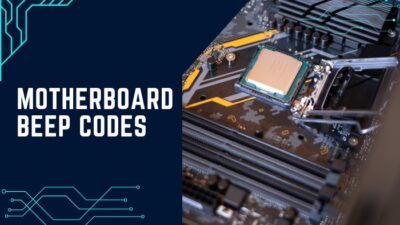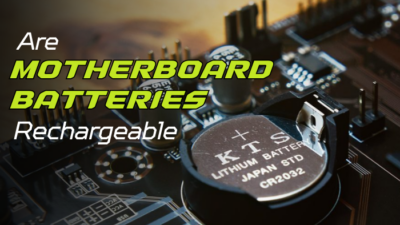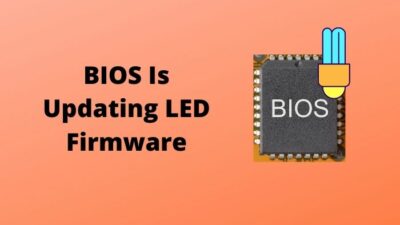As you know, the motherboard is a complicated and crucial piece of hardware for a PC. Without it, you can’t use other hardware parts like RAM, CPU, HDD, etc.
For upgrading or selling the PC or whatever reason, it is necessary to know what model and manufacturer’s motherboard you have inside your computer.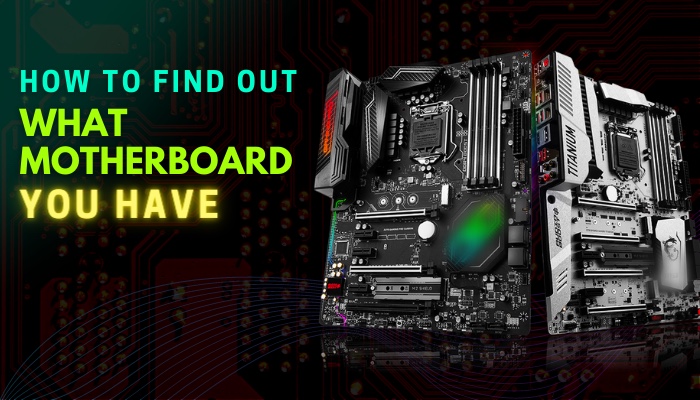
That’s why, in this article, I will discuss four different methods so that you can figure out what motherboard you have.
So, tag along.
How to Check What Motherboard You Have
To quickly check the brand name & model of motherboards, press Windows + R to launch the Run command. Type msconfig32 and hit Enter. When the System Information app shows up, you will find the information next to BaseBoard Manufacturer, BaseBoard Product, and BaseBoard Version.
There are other ways you can find the info about your motherboard. I have discussed those in detail below.
Here are the methods to find out what motherboard you have on your PC:
1. Use the System Information Application
A System Information application on your PC provides all the information about the PC, including your motherboard. Let’s see how to get the details using this app.
Follow the steps to find out the info about the motherboard using System Information:
- Press the Windows + R button to open the Run command.
- Type msconfig32 and press OK.
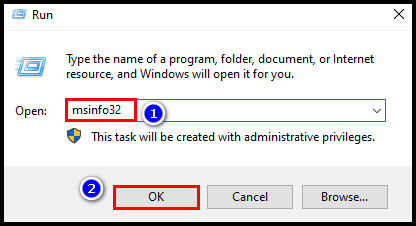
- Go to the right pane and look for the BaseBoard Manufacturer, BaseBoard Product, and BaseBoard Version.
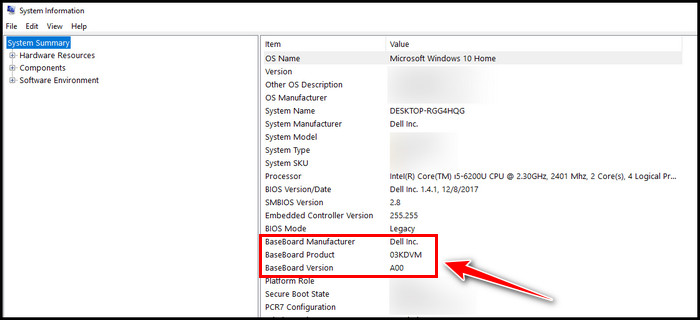
In some cases, some information may show as N/A or Not Available in the System Information application. If you also see that, use the command prompt to see the details about your motherboard. Follow the next section to learn how to do that.
Moreover, if you are considering upgrading your CPU, read our latest article on Can I upgrade the CPU without changing the motherboard?
2. Use the Command Prompt
Due to some technical issue, the System Information app may only get some information about your motherboard. In that case, you can get the info using the command prompt. Simply, you just need a command to get that. Here’s how.
Pursue the following process to see which motherboard you have using the cmd:
- Press the Windows + R button to launch the Run command.
- Type cmd and press OK.
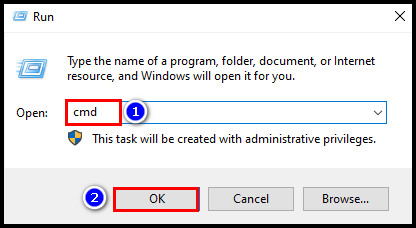
- Copy-paste or type the following command in the command prompt and hit Enter.
- wmic baseboard get product,manufacturer,version,serialnumber

- wmic baseboard get product,manufacturer,version,serialnumber
The command prompt will show the model and the manufacturer name, like ASUS, Gigabyte, DELL, HP, MSI, etc.
Read more to find out which one is better, between MSI vs. Gigabyte motherboards.
3. Use a Third-Party Software
Another method to figure out the motherboard is by using third-party software. In my opinion, CPU-Z is the best application for that. It is a free application & doesn’t require installation. Simply run the application, and it will do its work.
Here is the way to get the information about the motherboard using CPU-Z:
- Go to the CPU-Z website and download the zip file of the application from there.
- Extract the file and run the CPU-Z application.
- Click on the Mainboard tab.
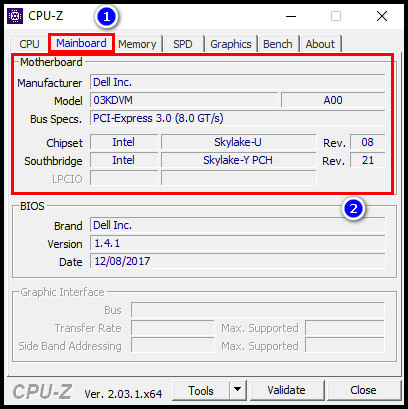
You will see the details of your motherboard manufacturer’s name, chipset, bus specs, model, and more.
If your motherboard’s temperature keeps rising, read our article to quickly find out how to fix it when the motherboard temperature is high.
4. Physically Check the Motherboard and the Package
Many people, including some friends, ask me how to check your motherboard model number. I simply suggest the first three methods. If those don’t work, I tell them to check the motherboard physically inside the PC case.
The Motherboard manufacturer’s name and model are also on the motherboard’s body. You should follow this method if you can’t turn on your PC or the board is not installed on your PC yet.
Otherwise, I don’t suggest that. I don’t recommend physically checking the motherboard for the laptop, either.
Since there are a lot of parts, you need to remove them to see the details. If you open it by yourself, there is a big chance you may lose the warranty on your laptop.
There is a small catch with this method. The name & model are not in one particular spot.
For different motherboard manufacturers, the information you may find in other places. Even once, I found the name in two separate places for the exact motherboard brands.
Typically, you may find that info where there is sufficient room to write in huge block letters. Closely look at the RAM, CPU & GPU slots. Most of the time, you should find those written around there. It should narrow down your search. 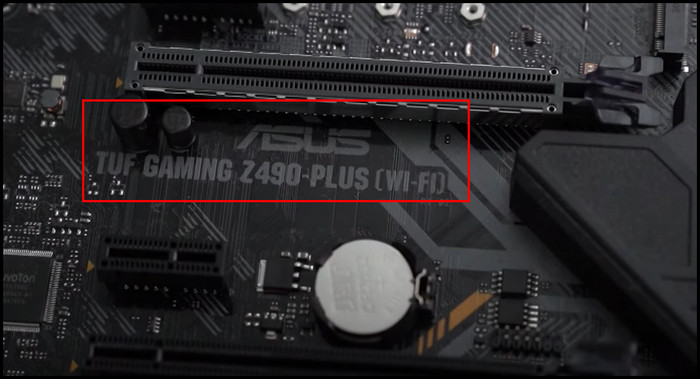
You can also look at the package you got with your motherboard when you bought it. If you still have the package in your possession, quickly grab it. You will find all the detailed information about the motherboard there.
Do you want to add an extra fan to your motherboard? Then, check out our epic guide on how to connect additional fans to the motherboard. If you accidentally drop any, you can visit our other excellent guide on cleaning thermal paste on CPU pins or motherboards.
Why Do You Need to Find Out What Motherboard You Have?
The main reason you should know about your motherboard is because of the compatibility issue. Moreover, if you like to sell your motherboard, you must know the details to discuss with your buyer & let them know the specification of your motherboard.
The motherboard combines all the PC parts you put inside your PC case. That doesn’t mean the motherboard will support all the hardware components.
Let’s say you have a ten-year-old motherboard on your PC. If you put in RTX 4090, your out-modeled motherboard won’t support it. In case it runs, the mobo will crash sooner or later. Plus, you won’t be able to enjoy the experience of RTX 4090 properly.
That’s why you should always be aware of your motherboard before you buy any upgraded RAM, GPU, or other hardware for your PC. If you encounter error code 99, visit our article for incredible solutions to fix the motherboard error 99.
FAQs
How do I know if my motherboard is ATX or Micro ATX?
By checking out the physical dimensions of the motherboard, you can know whether your motherboard is ATX or micro-ATX. Generally, the size of an ATX motherboard is 12 x 9.6 inches. On the other hand, the size of the micro-ATX or mATX motherboard is 9.6 x 9.6 inches.
How do I know what motherboard I have in BIOS?
To know what motherboard you have in BIOS, open the Run command, type msconfig32, and click OK. You will find the information about your motherboard there.
What are the 3 types of motherboards?
The three types of motherboards are standard ATX, Micro-ATX, and Mini-ITX. Additionally, you can find two other types of motherboards on the market: Nano ITX and Pico-ITX.
Final Thought
The main hardware component of the PC is the motherboard. If you have decided to upgrade your motherboard, ensure you get the suitable one compatible with other PC parts. Otherwise, it will be a total waste of money.
I hope you get to know all the information about your motherboard. Comment below if you have any queries. I will gladly answer them all.
Peace!

